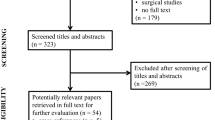Abstract
Magnetic resonance imaging (MRI) can be useful not only for the diagnosis of multiple system atrophy (MSA) itself, but also to distinguish between different clinical subtypes. This study aimed to investigate whether there are differences in the progression of subcortical atrophy and iron deposition between two variants of MSA. Two serial MRIs at baseline and follow-up were analyzed in eight patients with the parkinsonian variant MSA (MSA-P), nine patients with cerebellar variant MSA (MSA-C), and fifteen patients with Parkinson’s disease (PD). The R2* values and volumes were calculated for the selected subcortical structures (caudate nucleus, putamen, globus pallidus, and thalamus) using an automated region-based analysis. In both volume and R2*, a higher rate of progression was identified in MSA-P patients. Volumetric analysis showed significantly more rapid progression of putamen and caudate nucleus in MSA-P than in MSA-C. With regard to R2* changes, a significant increase at follow-up and a higher rate of progression were identified in the putamen of MSA-P group compared to MSA-C and PD groups. This longitudinal study revealed different progression rates of MRI markers between MSA-P and MSA-C. Iron-related degeneration in the putamen may be more specific for MSA-P.


Similar content being viewed by others
References
Gilman S, Wenning GK, Low PA, Brooks DJ, Mathias CJ, Trojanowski JQ et al (2008) Second consensus statement on the diagnosis of multiple system atrophy. Neurology 71:670–676
Ozawa T, Paviour D, Quinn NP, Josephs KA, Sangha H, Kilford L et al (2004) The spectrum of pathological involvement of the striatonigral and olivopontocerebellar systems in multiple system atrophy: clinicopathological correlations. Brain 127:2657–2671
Sitburana O, Ondo WG (2009) Brain magnetic resonance imaging (MRI) in parkinsonian disorders. Parkinsonism Relat Disord 15:165–174
Horimoto Y, Aiba I, Yasuda T, Ohkawa Y, Katayama T, Yokokawa Y et al (2002) Longitudinal MRI study of multiple system atrophy—when do the findings appear, and what is the course? J Neurol 249:847–854
Lee EA, Cho HI, Kim SS, Lee WY (2004) Comparison of magnetic resonance imaging in subtypes of multiple system atrophy. Parkinsonism Relat Disord 10:363–368
Minnerop M, Specht K, Ruhlmann J, Schimke N, Abele M, Weyer A et al (2007) Voxel-based morphometry and voxel-based relaxometry in multiple system atrophy-a comparison between clinical subtypes and correlations with clinical parameters. Neuroimage 36:1086–1095
Pellecchia MT, Barone P, Mollica C, Salvatore E, Ianniciello M, Longo K et al (2009) Diffusion-weighted imaging in multiple system atrophy: a comparison between clinical subtypes. Mov Disord 24:689–696
Wang PS, Wu HM, Lin CP, Soong BW (2011) Use of diffusion tensor imaging to identify similarities and differences between cerebellar and Parkinsonism forms of multiple system atrophy. Neuroradiology 53:471–481
Ji L, Zhu D, Xiao C, Shi J (2014) Tract based spatial statistics in multiple system atrophy: a comparison between clinical subtypes. Parkinsonism Relat Disord 20:1050–1055
Nicoletti G, Rizzo G, Barbagallo G, Tonon C, Condino F, Manners D et al (2013) Diffusivity of cerebellar hemispheres enables discrimination of cerebellar or parkinsonian multiple system atrophy from progressive supranuclear palsy-Richardson syndrome and Parkinson disease. Radiology 267:843–850
Lee JH, Han YH, Kang BM, Mun CW, Lee SJ, Baik SK (2013) Quantitative assessment of subcortical atrophy and iron content in progressive supranuclear palsy and parkinsonian variant of multiple system atrophy. J Neurol 260:2094–2101
Hughes AJ, Daniel SE, Kilford L, Lees AJ (1992) Accuracy of clinical diagnosis of idiopathic Parkinson’s disease. A clinico-pathological study of 100 cases. J Neurol Neurosurg Psychiatry 55:181–184
Draganski B, Ashburner J, Hutton C, Kherif F, Frackowiak RS, Helms G et al (2011) Regional specificity of MRI contrast parameter changes in normal ageing revealed by voxelbased quantification (VBQ). Neuroimage 55:1423–1434
Seppi K, Schocke MF, Mair KJ, Esterhammer R, Scherfler C, Geser F et al (2006) Progression of putaminal degeneration in multiple system atrophy: a serial diffusion MR study. Neuroimage 31:240–245
Pellecchia MT, Barone P, Vicidomini C, Mollica C, Salvatore E, Ianniciello M et al (2011) Progression of striatal and extrastriatal degeneration in multiple system atrophy: a longitudinal diffusion-weighted MR study. Mov Disord 26:1303–1309
Bunzeck N, Singh-Curry V, Eckart C, Weiskopf N, Perry RJ, Bain PG et al (2013) Motor phenotype and magnetic resonance measures of basal ganglia iron levels in Parkinson’s disease. Parkinsonism Relat Disord 19:1136–1142
Matsusue E, Fujii S, Kanasaki Y, Sugihara S, Miyata H, Ohama E et al (2008) Putaminal lesion in multiple system atrophy: postmortem MR-pathological correlations. Neuroradiology 50:559–567
Köllensperger M, Wenning GK (2009) Assessing disease progression with MRI in atypical parkinsonian disorders. Mov Disord 24(Suppl 2):S699–S702
Hauser TK, Luft A, Skalej M, Nägele T, Kircher TT, Leube DT et al (2006) Visualization and quantification of disease progression in multiple system atrophy. Mov Disord 21:1674–1681
Crivello F, Tzourio-Mazoyer N, Tzourio C, Mazoyer B (2014) Longitudinal assessment of global and regional rate of grey matter atrophy in 1172 healthy older adults: modulation by sex and age. PLoS One 9:e114478
Watanabe H, Saito Y, Terao S, Ando T, Kachi T, Mukai E et al (2002) Progression and prognosis in multiple system atrophy: an analysis of 230 Japanese patients. Brain 125:1070–1083
Acknowledgments
This research was supported by Basic Science Research Program through the National Research Foundation of Korea (NRF) funded by the Ministry of Education, Science and Technology (2014R1A1A2059252). The sponsor’s role was confined to financial support. The sponsor was not involved in the design, methods, subject recruitment, data collections, analysis, and preparation of reports.
Conflicts of interest
The authors declare that they have no conflict of interest.
Author information
Authors and Affiliations
Corresponding author
Additional information
Jae-Hyeok Lee and Tae-Hyung Kim contributed equally to this study as first authors.
Rights and permissions
About this article
Cite this article
Lee, JH., Kim, TH., Mun, CW. et al. Progression of subcortical atrophy and iron deposition in multiple system atrophy: a comparison between clinical subtypes. J Neurol 262, 1876–1882 (2015). https://doi.org/10.1007/s00415-015-7785-5
Received:
Revised:
Accepted:
Published:
Issue Date:
DOI: https://doi.org/10.1007/s00415-015-7785-5




